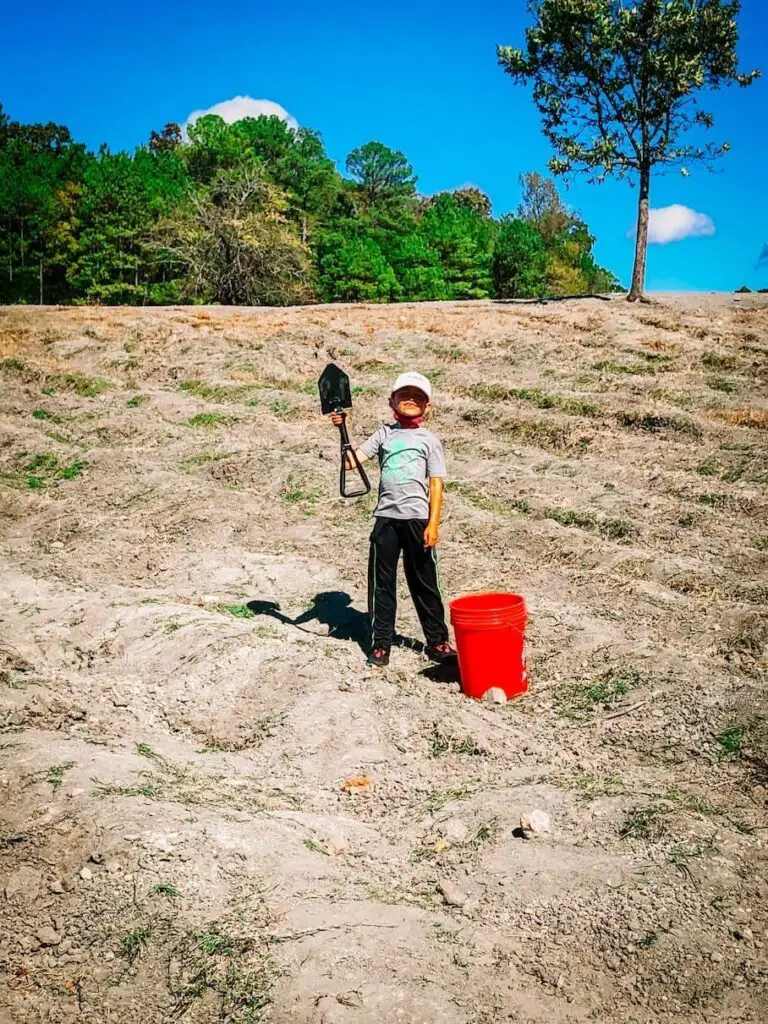Understanding Adults' and Kids' Vacation Needs: Rest, Entertainment, and Education
Exploring the family vacation dynamics, it becomes evident that adults and children typically have different preferences when it comes to vacationing. Adults usually seek rest and relaxation, while kids are excited by lots of activities and fun. Understanding each party’s needs is essential to ensure a harmonious and enjoyable trip for everyone.
Adults, often under a lot of pressure from work, mainly look forward to unwinding while on vacation. This could come in the form of lounging on the beach, going to a spa, or indulging in peaceful nature walks. Quiet dinners and sightseeing also offer moments of tranquility often appreciated by adults.
Children, on the other hand, often concentrate on entertainment and fun. They look forward to activities like building sandcastles on the beach, going on amusement park rides, or participating in various water sports. Kids are curious and energy-filled; they would rather explore and play than sit around doing nothing. I recommend reading The Family Travel Handbook by Lonely Planet, a book that offers practical tips and inspiring ideas for planning and enjoying a family vacation.
Balancing Adult and Kid Activities in a Travel Itinerary
To balance these differing needs and interests, it is essential to consider everyone’s preferences when planning a vacation itinerary.
For instance, choosing accommodation with both a spa and a playground or a kids’ club nearby will satisfy both adults’ need for relaxation and kids’ desire for active playtime. Accommodations can also be near attractions like museums or historical sites, which can be an educational experience for the entire family.
Also, balance the daily activities; try mixing quiet and active, educational and recreational ones. You might start the day with a relaxing activity that adults will enjoy, followed by a lively one for the kids, then repeat during the day. Tiring the kids out with active pursuits during the day can also pave the way for peaceful evenings for the adults.
Navigating Family Vacation Balance: Understanding and Flexibility
It’s common for tensions to brew on family vacations when the kids feel their needs for fun aren’t being met, or adults feel they aren’t getting enough rest. The key to mitigating this is creating an atmosphere of understanding and respect, as a vacation should be enjoyable for all involved.
Flexibility is another vital aspect in finding this balance. Keeping an open schedule can allow for unplanned events, which quite often end up being the most memorable moments of the vacation. This flexibility could manifest as an extra hour at the waterpark for the kids while adults unwind with a spa day, or an impromptu family excursion to an exciting local site.
Ultimately, the main objective of a vacation is cultivating valuable family time. Understanding everyone’s vacation desires can aid in developing a trip that leaves everyone feeling satisfied.

HOW TO PLAN BALANCED FAMILY VACATION ITINERARIES
Developing the Itinerary: Blending Kid and Adult Activities
The heart of crafting a well-balanced vacation itinerary lies in merging activities for all ages. This calls for the perfect blend of enriching cultural experiences and tranquil adult activities with plenty of opportunities for kid-friendly fun.
The first step in this process is to determine each family member’s interests and preferences. Adults might savor serene museum visits, fine dining, or refreshing hikes, while kids might look forward to thrill-packed days at amusement or water parks, engaging museum exhibits, or just simple, sandy fun on a beach day.
Inclusive Experiences: Fun for All Ages
One of the key factors for a balanced vacation itinerary lies in finding activities that are engaging and enjoyable for both adults and children. This could include visits to historical sites or natural landmarks, where adults can appreciate the historical or natural significance and children can enjoy the space to explore.
Hiking in a national or state park could serve as a fantastic opportunity to introduce children to nature while adults can enjoy the challenge and the landscape. Museums with interactive exhibits can also provide engaging learning experiences for kids while offering adults more in-depth information.
Destinations such as zoos, aquariums, and science centers also strike a great balance by providing educational yet entertaining experiences for all family members.
Balancing Act: Alternating Adult and Kid-Centric Activities
One effective method to ensure a balanced vacation experience is to alternate adult-centric and child-centric activities. This approach allows both adults and children to look forward to their preferred activities and provides a fair share of enjoyment to all.
For example, a morning visit to an art gallery for adults can be followed by an afternoon at a fun fair or playground for kids. This ensures that everyone’s interests are catered to and there are no feelings of neglecting someone’s preferences.
Relaxation Time: Ensuring Adequate Downtime
Irrespective of the range of exciting activities on offer, it’s also vitally crucial to plan for downtime in your itinerary. This allows both adults and children time to relax and recharge, preventing any potential vacation burnout. Schedule free periods during your vacation where family members can relax, play in the hotel pool, read a book, or simply enjoy the vacation without any fixed plans.
Practical Tip: Allow Flexibility in Your Itinerary
Lasty, be flexible in your planning. Life is unpredictable, and even more so when taking a vacation with children. Elements such as weather, unexpected closures, or simply mood swings can disrupt the best-laid plans. Therefore, having a backup plan or being prepared to adjust your itinerary as needed can relieve stress and lead to a more enjoyable family vacation.
Planning a balanced family vacation that incorporates both adult and kid activities can be a challenging task. It demands thoughtful planning, flexibility, and a deep understanding of each family member’s interests. Yet, the effort invested in designing such a vacation can lead to a wonderful experience, full of lasting memories for every family member.

STRATEGIES TO HANDLE INEVITABLE CONFLICTS DURING FAMILY VACATIONS
Strategies for Balancing Adult and Kid Activities on a Family Vacation
Although the ideal family vacation may seem like it should be filled with harmony and free of conflict, the reality can often be quite different. Differences in interests among adults and children can sometimes cause friction. In this section, we will delve into some helpful strategies for navigating these potential areas of conflict. This will ensure every family member enjoys a remarkable vacation.
The Power of Compromise
It’s natural for different family members to have contrasting ideas about what represents a perfect holiday. Perhaps the adults dream of relaxed afternoons exploring art galleries, while the kids are itching to try every roller coaster at the amusement park. This is where the power of compromise comes in.
Each family member must understand the necessity of tolerating activities that may not be their personal preference. Parents might spend a day at the zoo for their child’s sake, and in return, the child could accompany the parents to a museum or a fine dining restaurant. It’s a give-and-take approach that encourages understanding and respect between family members.
Negotiation Tactics
When differences persist and compromise seems elusive, negotiation tactics can prove helpful. This strategy revolves around reaching an agreement by discussing various options and concessions.
For example, suppose there’s a conflict over beach time versus shopping time. The family can strike a deal where the morning is spent on the beach, while the evening is set aside for browsing stores. In this way, everyone’s interests are considered, and everyone gets a piece of what they want from the vacation.
Mutual Agreement as a Conflict Resolution Tool
Sometimes, clear, structured agreements can help set the tone for a more harmonious vacation. At the start of the trip, the family can sit down and draft a ‘vacation agreement’. This document can outline when and how decisions will be made about activities, and how conflicts will be resolved.
As a part of this agreement, the family can decide on a rotating ‘decision day’ policy, for instance. On their designated day, each family member can choose the main activity. This gives everyone a chance to have their preferred day and encourages mutual respect for everyone’s choices.
Education and Communication
Another strategy is to educate kids about the importance and value of adult activities. Parents can explain the historical or cultural significance of a visit to a historical site or a local culinary experience. By making such experiences interesting and relevant, children might be more eager to participate.
Quality communication is key in minimizing conflicts during family vacations. Regular family meetings can provide a space for everyone to voice their concerns, desires, and frustrations. This can prevent resentment from building and reduces miscommunication.
To ensure a smooth and enjoyable family vacation, it’s critical to manage conflicts expertly through compromise, negotiation, and mutual understanding. This is achievable through advance planning, open communication, and a willingness to respect and cater to everyone’s interests. Indeed, a peaceful and delightful vacation can be actualized by taking everyone’s needs into account.
RECOMMENDATIONS FOR KID-FRIENDLY AND ADULT-ORIENTED ACTIVITIES
Striking a Balance: Integrating Kid-Friendly with Adult-Pleasing Activities in a Family Vacation
When mapping out a family getaway, the key is to incorporate activities that appeal to every age group. This consideration is vital to ensure everyone relishes in the exciting family vacation experience. Keeping everyone engaged in the planning process is an added advantage as it arouses excitement and involvement ahead of the trip.
To strike a balance between adult-preferred and kid-appealing activities in your vacation plan, thorough research of potential destinations and their offerings is invaluable. Such an approach facilitates planning the ultimate family retreat where everyone’s interests are catered for in equal measure.
Exploring Nature Together
Nature provides endless opportunities for effective inter-generational activities. Hiking in national parks is a great way to enjoy the natural beauty and experience a sense of adventure. Locations such as the Grand Canyon, Yellowstone National Park, or the Great Smoky Mountains offer trails of varying difficulties, enabling both adults and kids to benefit from the great outdoors.
Museums: A Blend of Fun and Learning
Museums often deploy the best of both worlds, offering educational insights for adults and engaging installations for the younger visitors. Interactive museums and science centers, like The Smithsonian in Washington D.C. or The Exploratorium in San Francisco, cater to curious minds of all ages. They motivate learning through interactive exhibitions, live demonstrations, and hands-on experiences.
Theme Parks: Thrill for All Ages
Theme Parks are classic family vacation destinations. They offer a wide range of rides, attractions, and activities that appeal to all ages. Parks like Disneyland and Universal Studios feature several kid-friendly attractions, while also offering adult-centered entertainment in the form of concerts, upscale dining, and shopping.
Beach Resorts: Relaxation Meets Playtime
For a more relaxed vacation, beach resorts blend laid-back adult relaxation and exciting kid-friendly activities. Adults can enjoy sunbathing, spa services, and beachfront dining. Simultaneously, kids can engage in various water sports, beach games, and kid’s club activities. Many beaches around Florida’s coastline, such as Destin or Palm Beach, are known for their family-friendliness. One of my favorite getaways is Jekyll Island on Georgia’s Coast.
Cultural Destinations
Exploring different cultures can be a mutually beneficial experience for both adults and kids. Walking around the history-steeped streets of cities like Rome or indulging in the gastronomical delights of Paris can be educational and fun for the entire family.
Select Age-Appropriate Activities
In order to maintain a balance, ensure that every day involves activities for both parties. Carry out a family meeting and ask everyone to contribute to the itinerary. This would make everyone feel considered and increase their enthusiasm. Remember to include rest days or parts of a day between major activities to avoid burnout.
Planning a family vacation that appeals to all members might require some extra effort, but the payoff is well worth it. Generating long-lasting memories through shared experiences can be achieved by maintaining a balanced mix of activities that cater to everyone’s interests. This careful planning is crucial in promoting family unity and ensuring a memorable holiday.

MAKING THE MOST OUT OF YOUR FAMILY VACATION
The Art of Balancing Activities: Essential for a Successful Family Vacation
To design a holiday that is both thoroughly enjoyable for adults and enchantingly fun for kids requires a blend of careful organization and a spark of creativity. Perfecting the balance between adult and child-centered activities could mean the difference between a memorable holiday and a stressful ordeal. When each family member’s interests are taken into consideration, you’re not just planning a vacation – you’re nurturing feelings of inclusion and fostering the growth of stronger family bonds.
The Rationale behind a balanced vacation plan
A balanced vacation is not just about sharing the fun; it’s about nurturing relationships and creating long-lasting memories. Activities that cater to both adults and children encourage collective participation, promoting a sense of unity and camaraderie. Kids get exposed to adult experiences in a controlled manner, whereas adults relive their youth, making such vacations an excellent platform for family bonding.
Crafting a Balanced Vacation Plan
Start by mapping out activities that appeal to both adults and kids. Museums with interactive exhibits, educational workshops that are fun, or family-friendly hiking trails can be perfect for a day not too tiring for kids or too boring for adults.
Consider the likes and dislikes of your family members. It’s essential to discuss and compromise when planning to ensure everyone has something to look forward to on the vacation. Using an agenda can facilitate this process, making sure each day has a balance of adult and child activities.
Building Connections through Joint Activities
A balanced family vacation should have plenty of opportunities for joint activities. These shared experiences create the perfect environment for family members to connect on a deeper level.
Making meals together, taking part in a group scavenger hunt or learning new skills, like horse riding or surfing, are great examples of joint activities that can be enriching experiences.
Creating Lasting Memories
The ultimate aim of a family vacation is to create long-lasting memories. These shared experiences help shape shared narratives that strengthen familial bonds.
To make this aspect more tangible, you could keep a family travel diary, where each day, each member of the family, adult or child, can document their favorite part of the day. Another way is to make a travel scrapbook or a photo album which can be a visual representation of your vacation, a memento to cherish for years to come.
Conclusion: Adaptability and Flexibility Are Key
Indeed, balancing adult and kid activities for a family vacation requires effort and planning. Yet, it’s worth keeping in mind that adaptability and flexibility are crucial when it comes to executing the plan. Circumstances can change, and so might preferences. The real balance lies in adapting to these changes without compromising the fun and maintaining a relaxed atmosphere. After all, vacations are about breaking free from the routine and making some unforgettable memories.

Creating precious memories is at the heart of family vacations. A well-balanced itinerary is crucial to ensure all family members, both adults and kids, feel their needs and interests are considered and met. The art of compromise, negotiation, and mutual agreement forms an integral part of this process. Equipped with a curated list of kid-friendly and adult-oriented activities, families can engage in shared adventures while fostering deeper connections. Balancing adult and kid activities does not merely aim to pacify differing interests; it allows every individual, regardless of age, to share, learn, and enjoy together. The ultimate objective is the shared joy that lasts beyond the vacation, leaving every traveler, young or older, looking forward to the next family adventure.
MORE FUN STUFF TO CHECK OUT:
- Tracking Dinosaurs at Dinosaur Valley State Park: A Family-Friendly Guide to Adventure
- Cowboy Culture Comes to Life: A Family-Friendly Trip to Fort Worth Stockyards
- Road Trip Essentials For Kids
- Essentials for an Easy Beach Trip with Kids
- Kids Ski Essentials
- Kids Hiking Essentials
- 4 Mindfulness Practices for Parents






